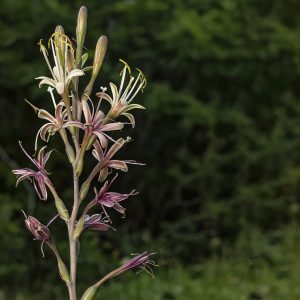 Agave maculata, formerly known as Manfreda maculosa, is a plant of striking beauty and ecological significance. Its unique features—spotted leaves, tall flowering stalks, and easy-care nature—make it a favorite among succulent lovers and ecologically conscious gardeners. As part of the genus Agave, Agave maculata is closely related to a group of plants that were once classified in the genus Manfreda. This fascinating botanical history, coupled with the plant’s ability to support rare butterflies, makes it an essential addition to gardens and plant collections. A deeper exploration of its relatives and popular cultivars reveals even more reasons to celebrate this plant family.
Agave maculata, formerly known as Manfreda maculosa, is a plant of striking beauty and ecological significance. Its unique features—spotted leaves, tall flowering stalks, and easy-care nature—make it a favorite among succulent lovers and ecologically conscious gardeners. As part of the genus Agave, Agave maculata is closely related to a group of plants that were once classified in the genus Manfreda. This fascinating botanical history, coupled with the plant’s ability to support rare butterflies, makes it an essential addition to gardens and plant collections. A deeper exploration of its relatives and popular cultivars reveals even more reasons to celebrate this plant family.
The Manfreda group, before its reclassification under Agave, comprised several species of striking and versatile plants native to North and Central America. These plants share certain traits, such as soft, fleshy leaves and a tendency to thrive in arid conditions, but they also boast their unique charms. For example, species like Manfreda virginica (now Agave virginica) are native to eastern North America and stand out with their fragrant flowers that attract night-flying moths. These plants exhibit the same resilience and adaptability as Agave maculata, making them excellent candidates for xeriscaping and container gardening.
Another noteworthy former Manfreda species is Manfreda elongata, now Agave elongata, which hails from Central America and produces exceptionally long and slender leaves with subtle spotting. These relatives collectively highlight the adaptability and aesthetic appeal of plants in this group, showcasing a range of colors, textures, and growth habits.
Among cultivars, the standout is undoubtedly Manfreda ‘Chocolate Chip,’ a strikingly compact and ornamental variety that has gained popularity among gardeners. This cultivar features shorter, darker leaves densely speckled with chocolate-brown spots, which gives it a unique, dramatic appearance. It is a fantastic choice for small spaces, such as balconies or tabletop displays, due to its petite size and low-maintenance requirements. Like Agave maculata, ‘Chocolate Chip’ thrives in bright, sunny locations and well-draining soil, making it perfect for indoor or outdoor settings.
The allure of ‘Chocolate Chip’ lies not only in its aesthetic appeal but also in its versatility. It pairs beautifully with other drought-tolerant plants like Echeverias, Sedums, and other compact succulents. Its modest water needs and ability to withstand extended dry periods make it a favorite for busy plant lovers or those in areas with limited rainfall. The cultivar also thrives in rock gardens, where its distinctive markings contrast beautifully with stones and other natural elements.
Adding Agave maculata and its relatives, including cultivars like ‘Chocolate Chip,’ to your collection does more than enhance its visual appeal—it helps create a garden that supports biodiversity. The larval host relationship between Agave maculata and the Manfreda giant-skipper butterfly (Stallingsia maculosus) is a perfect example of how planting natives can have a direct positive impact on local ecosystems. This butterfly, one of the rarest in the United States, depends on Agave maculata for survival, making its cultivation an act of conservation.
Incorporating plants like Agave maculata and its cultivars into your garden is also an excellent way to celebrate the diversity of North American flora. These plants are hardy, beautiful, and ecologically important, providing shelter, nectar, and sustenance for pollinators and other wildlife. Whether you’re a seasoned gardener or a newcomer to the world of succulents, these plants offer an easy, rewarding way to connect with nature and support its delicate balance.
From its captivating spotted leaves to its role in supporting endangered species, Agave maculata is much more than a decorative plant. It is a testament to the resilience of life in arid environments and a reminder of the interconnectedness of ecosystems. The broader family of former Manfreda species and cultivars like ‘Chocolate Chip’ only adds to the appeal, offering gardeners a palette of options to create stunning, low-maintenance displays that support biodiversity. Whether displayed indoors, outdoors, or as part of a conservation effort, these plants are a joy to grow and a gift to nature.
